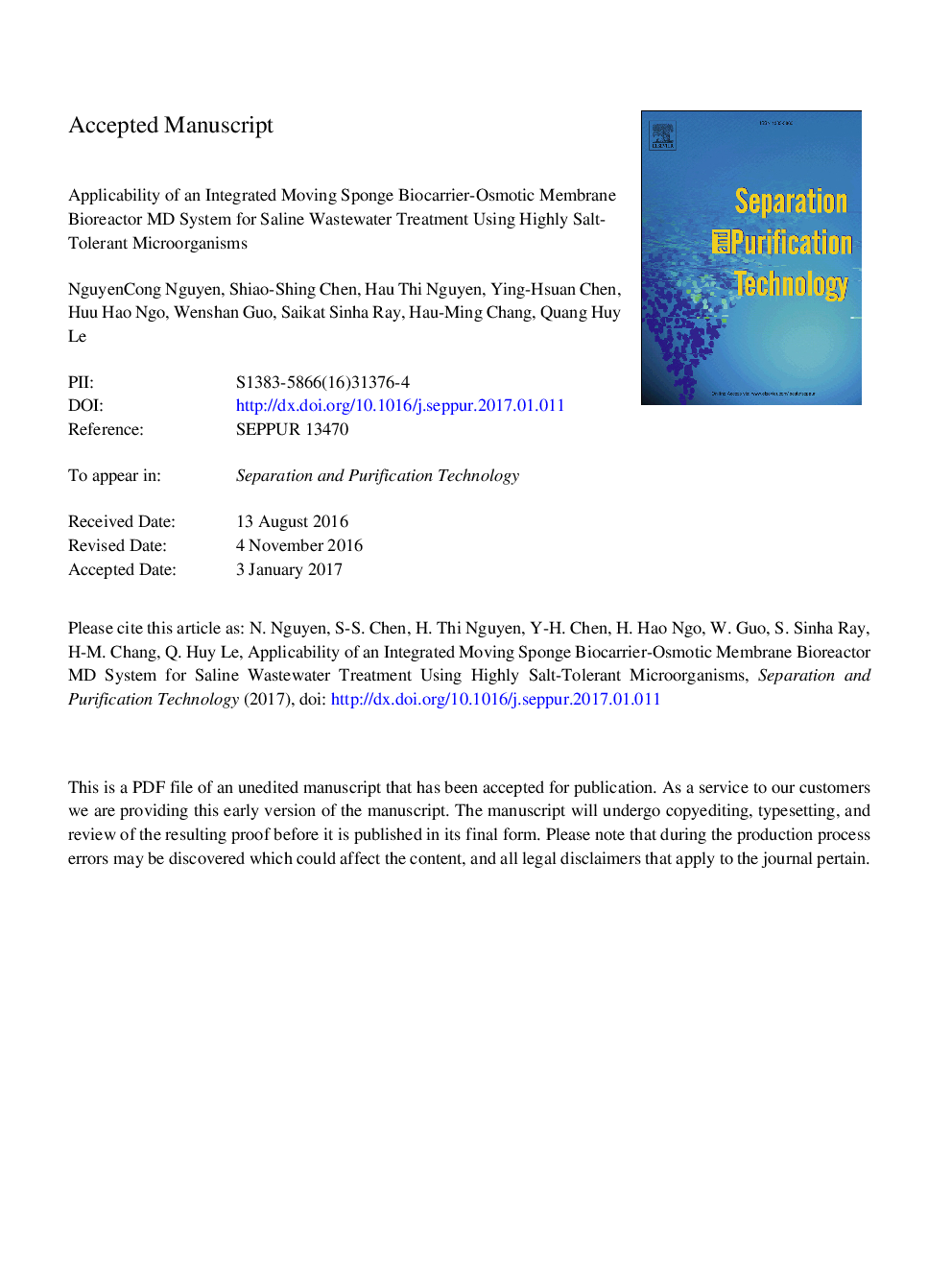| Article ID | Journal | Published Year | Pages | File Type |
|---|---|---|---|---|
| 7043884 | Separation and Purification Technology | 2018 | 25 Pages |
Abstract
Osmotic membrane bioreactors (OsMBRs) are a recent breakthrough technology designed to treat wastewater. Nevertheless, their application in high-salinity wastewater treatment is not widespread because of the effects of saline conditions on microbial community activity. In response, this study developed an integrated sponge biocarrier-OsMBR system using highly salt-tolerant microorganisms for treating saline wastewater. Results showed that the sponge biocarrier-OsMBR obtained an average water flux of 2 L/m2 h during a 92-day operation when 1 M MgCl2 was used as the draw solution. The efficiency in removing dissolved organic compounds from the proposed system was more than 99%, and nutrient rejection was close to 100%, indicating excellent performance in simultaneous nitrification and denitrification processes in the biofilm layer on the carriers. Moreover, salt-tolerant microorganisms in the sponge biocarrier-OsMBR system worked efficiently in salt concentrations of 2.4%. A polytetrafluoroethylene MD membrane (pores = 0.45 μm) served to regenerate the diluted draw solution in the closed-loop system and produce high-quality water. The moving sponge biocarrier-OsMBR/MD hybrid system demonstrated its potential to treat salinity wastewater treatment, with 100% nutrient removal and 99.9% conductivity rejection.
Related Topics
Physical Sciences and Engineering
Chemical Engineering
Filtration and Separation
Authors
Nguyen Cong Nguyen, Shiao-Shing Chen, Hau Thi Nguyen, Ying-Hsuan Chen, Huu Hao Ngo, Wenshan Guo, Saikat Sinha Ray, Hau-Ming Chang, Quang Huy Le,
